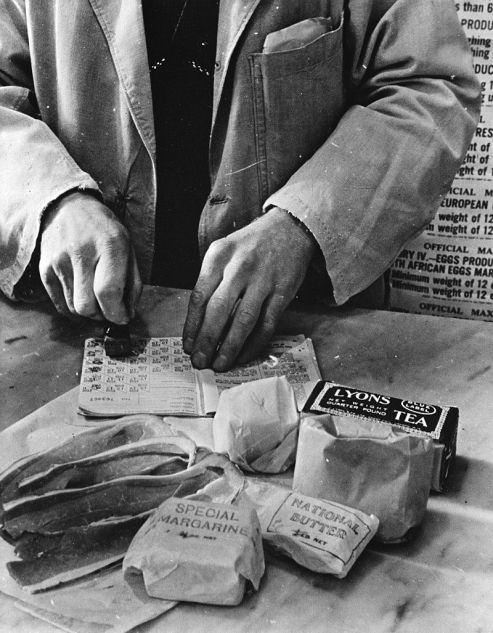On 21 July 1946, the UK Ministry of Food introduced bread rationing cards.
The British economy during the Second World War had been focused entirely on the Army and Navy, and almost all food and personal goods were strictly rationed. The minimum monthly rationing was one pound (454g) of bacon, two pounds (908g) of sugar, half a pound of tea, five pounds of meat, half a pound of cheese, eight pounds of jam/four pounds of preserved fruit/or four pounds of sugar, half a pound of butter and one pound of margarine, half a pound of lard, three-quarters of a pound of sweets, four eggs (although children and handicapped people were entitled to 12, and nursing mothers and vegetarians got eight). Adults were also given enough milk powder to produce two-and-a-quarter litres of milk each month, but children and nursing mothers received up to 12 litres of normal milk per month. Diabetics were also allowed to buy butter instead of sugar.
In 1946, Britain was facing a severe financial crisis combined with US Lend-Lease supplies coming to an end and catastrophic crop failure caused by heavy rains. The government therefore rationed the sale of bread for the first time in British history. The winter of 1946 to 1947 was extremely frosty and temperatures dropped to -20°C in some places causing many food warehouses and vegetable stores to freeze, leaving the country with no potato reserves. Strict rationing of one tonne of coal and fuel per household would be introduced.
Bread rationing was cancelled in 1948, clothing rationing ended in 1949, petrol rationing in 1950, sugar and confectionery rationing in 1953, and all the restrictions ended on 4 July 1954.
Source:
Ina Zweiniger‐Bargielowska, “Austerity in Britain: Rationing, Controls, and Consumption, 1939–1955”, Oxford University Press, 2002
























